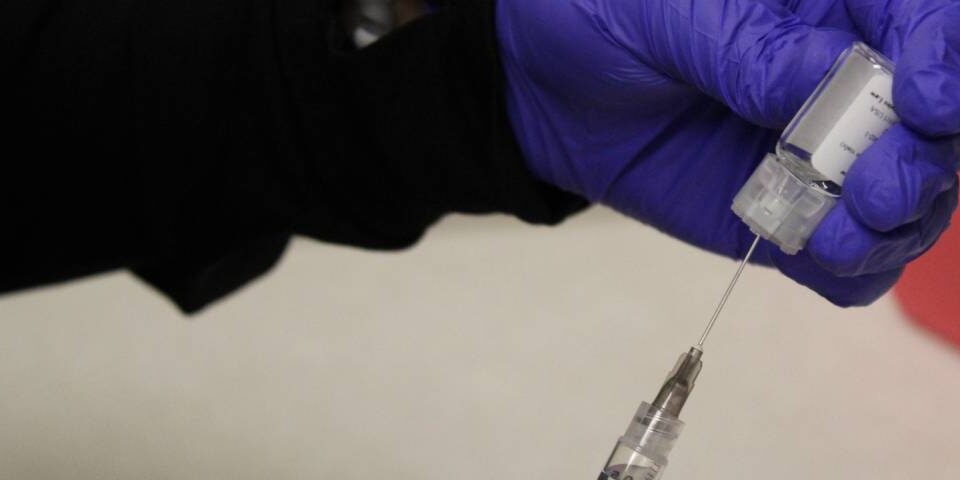
Breaking Barriers in Pyoderma Gangrenosum Treatment
January 9, 2025
The Importance of Dermatology Clinical Trials
March 21, 2025Urticaria is the medical term for hives—itchy, raised welts or “wheals” on the skin. But imagine having hives that come and itch, fading in and out, for days, weeks, months… or even years. Chronic urticaria, also called chronic spontaneous urticaria (CSU) or chronic idiopathic urticaria, is the medical term used when the hives last longer than six weeks and recur over months and years. These itchy, red welts cause irritation, prevent people from sleeping, and can severely interfere with daily activities for long periods of time. Apex Clinical Research Center is now searching for patients struggling with this condition to participate in a clinical trial to find a more effective chronic urticaria treatment.
What is Chronic Urticaria?
Somewhere between 15 to 30 percent of people will experience hives at some point in their lives. But if the raised, itchy, red, swollen hives persist for six weeks or longer, they fit the definition of chronic spontaneous urticaria. Research indicates that this debilitating condition affects at least 500,000 people across the United States, possibly more because the condition may go unreported. During an attack, chemicals created by the immune system called histamine are released into the bloodstream and can cause swollen red wheals and itching.
Chronic urticaria hives may come and go and come back over that period of time. For some patients, the condition stretches out over months and even years. Although CSU is not usually dangerous in itself, patients struggling with it often experience severe impacts on their quality of life, being unable to sleep, concentrate, or work. Furthermore, these long-lasting hives can be symptomatic of more serious, systemic medical conditions, including autoimmune diseases. In any case, experiencing long-lasting hives isn’t normal and should be checked by your healthcare provider.
Exploring Chronic Urticaria Causes
The vast majority of chronic urticaria cases (8 out of 10) are “idiopathic”, which means they have no clear cause, which can compound the frustration for patients with unpredictable flare-ups happening all the time. Nevertheless, scientific research has uncovered some commonalities and indicators of potential chronic urticaria causes:
Genetic Predisposition
A small, but growing number of studies are currently delving into how genetic expression may make some people more susceptible to chronic spontaneous urticaria. Those who experienced this disease show a strong inflammatory response connected to certain activated genes. In some cases, they were also linked to allergies and autoimmune disorders.
Autoimmune Responses
When something triggers the body’s cells to attack its own tissues, we call it an autoimmune response. Research indicates that nearly 1 out of 5 people diagnosed with chronic spontaneous urticaria also have an autoimmune diagnosis such as lupus, celiac disease, diabetes, vitiligo, thyroid disease, rheumatoid arthritis, dermatomyositis, or polymyositis.
Environmental Triggers
People who have allergies or sensitivities to environmental factors may also be more susceptible to chronic idiopathic urticaria. Sometimes episodes of chronic urticaria are triggered by temperature changes (cold or heat), friction or vibration (exercise or yard work), pressure on the skin from tight clothing, or exposure to environmental allergens like pollen, dander, mold, etc.
Idiopathic
As previously stated, the majority (80%) of chronic urticaria are idiopathic, meaning that the causes and triggers are still unknown, regardless of how thoroughly your healthcare provider has investigated them. This can be incredibly frustrating for patients who are struggling to find chronic urticaria treatment and relief.
Chronic Urticaria Symptoms and Diagnosis
Chronic urticaria symptoms are aggravating and life-disrupting, which is why working with a dermatologist to find the right chronic urticaria treatment is so important. Sometimes the condition is so bad that it can lead to mental and emotional health problems.
This is why the team at Apex Clinical Research Center is working on a groundbreaking chronic urticaria clinical trial right now. You may be eligible to participate if you have an official CSU diagnosis, which would include the following symptoms:
- Welts/wheals that appear anywhere on the body and last for at least 6 weeks, even if they come and go over that time.
- The welts can be purple, red, or skin-color. This often depends on your skin tone.
- These welts/wheals itch, sometimes intensely.
- The welts may vary in shape and size, appearing, fading, and reappearing repeatedly.
- Severe cases of chronic idiopathic urticaria may be accompanied by angioedema—swelling under the skin around the eyes, lips, or cheeks.
- Symptoms flare up during exertion, stress, or heat.
- Symptoms persist or fade and flare up again for 6 weeks or more.
Any persistent symptoms like these should be addressed by your healthcare provider. A physical examination, medical history, and possibly skin or blood tests should be administered to rule out any other conditions. Because it can be difficult to nail down the causes of chronic idiopathic urticaria, it’s important to see a dermatologist experienced in diagnosing and treating the condition.
Common Chronic Urticaria Treatment Options and Their Limitations
Even before reaching the official 6-week period for an official chronic urticaria diagnosis, healthcare providers can recommend and provide treatment to calm the itching and minimize the appearance and discomfort of the persistent hives. Current chronic urticaria treatment options can provide symptom relief, but most current treatments only manage symptoms temporarily without addressing underlying causes, and long-term use can lead to side effects:
Antihistamines
Common allergy medications called antihistamines are often the first line of treatment for itchy rash relief. These medications modulate an overactive, misguided immune response, calming the immune system. Long-term use of any antihistamine can lead to its loss of effectiveness over time, however.
Corticosteroids
Your dermatologist may prescribe a short-term dose of oral or topical corticosteroids to calm the itching and inflammation during severe flare-ups, but they can only be taken for a short amount of time before serious side effects manifest, so they can’t effectively address the long-term nature of chronic spontaneous urticaria.
Immunosuppressants
For severe cases that resist other chronic urticaria treatment options, immunosuppressants may be used, but they also come with side effects that can be just as troublesome as the hives themselves over time.
Lifestyle Adjustments
Lifestyle adjustments can also provide some relief as well. For example, lowering stress levels, avoiding known triggers, wearing loose, breathable, non-friction clothing, staying cool, and using cool compresses on itchy patches can provide temporary relief.
Chronic Urticaria Clinical Trial at Apex Clinical Research Center
Apex Clinical Research Center is actively recruiting patients now to find new, better, longer-lasting chronic urticaria treatment options:
Chronic Urticaria Clinical Trial Study Drug
We are currently studying Barzolvolimab, an injectable monoclonal antibody that may be used as a modulator of mast cell-related diseases like CSU. Mast cells are the primary immune cells responsible for the development of wheals and itching that cause intense discomfort for our patients. Mast cells release inflammatory mediators like histamine when they are activated. By inhibiting a certain receptor that normally activates mast cells, Barzolvolimab hopes to block the cascade of events leading to the development of urticaria.
Patient Eligibility Details
To be included in this study, participants must be at least 18 years old and have an active, official diagnosis of chronic spontaneous urticaria for 6 or more months. The urticaria must be refractory to a stable dose and regimen of 2nd generation antihistamines for at least 4 weeks.
In other words, they must have noted breakthrough hives and itching with or without angioedema for six or more weeks before the screening visit, despite being on treatment. Therefore, this clinical trial especially seeks to help those with cases of treatment-resistant CSU.
What to Expect During the Clinical Trial
The Apex Clinical Research Center’s chronic urticaria clinical trial is a year-long study during which the first 20 weeks of the study will compare Barzolvolimab vs. placebo. During weeks 24-48, all participants will receive active study medication.
As with all of our research studies, there is no cost to the participants. All medications and medical procedures are provided, and participants may receive a stipend for participating. In addition, all participants will receive very attentive care and will be very closely monitored for safety and comfort.
Find Out More About Our Chronic Spontaneous Urticaria Clinical Trial
Apex Clinical Research Center’s entire team is eager to help chronic urticaria patients get relief and long-term treatment so they can live active, full lives without constant, itchy discomfort. We are committed to improving care options and quality of life for everyone with CSU. If you meet the study criteria, we invite you to apply to participate in our chronic idiopathic urticaria treatment clinical trial or contact us with any questions you have about joining in. You may just be blazing a trail to long-term itch relief for yourself and many others!





